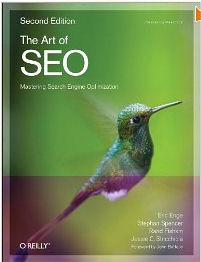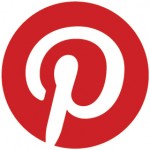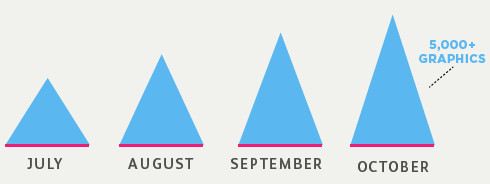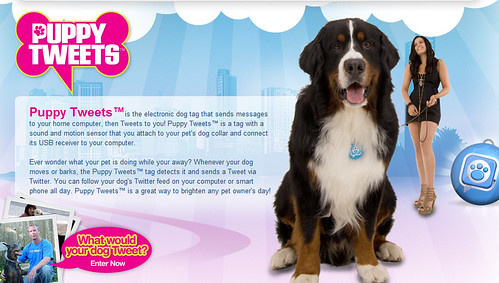So excited to hear about my crack, I mean Pinterest, from Jennifer Evans-Cario, President of Sugar Spun Marketing. What makes Pinterest different, how do we know if it will last? ![]() The key things that make it different is 1) It does something useful in a new way. Basically bookmarking with images – easier to process than a list in a feed. 2) it solves a problem; and 3) it appeals to publishers, curators, seekers and stashers. Oh – and it’s easy to use.
The key things that make it different is 1) It does something useful in a new way. Basically bookmarking with images – easier to process than a list in a feed. 2) it solves a problem; and 3) it appeals to publishers, curators, seekers and stashers. Oh – and it’s easy to use.
Category Archives: Social Media
Pubcon Day 2 – Social Signals in Search
This morning my friend John Ellis, founder of Crescent Interactive, is rocking the history of Google’s social connections from FriendConnect to Wave to Buzz – all things most in the room have no knowledge of. The point, Google has been trying for a long time. Then talks about how +1s are introduced in search results in March 2011.
 People ask John if he thinks Google+ will last, he doesn’t know but they pushed all in with it, so they’re in trouble if it doesn’t.
People ask John if he thinks Google+ will last, he doesn’t know but they pushed all in with it, so they’re in trouble if it doesn’t.
Bing has partnered with Linkedin, showing blended ads now. Integrating search seems to show some growth in Search Engine Share – related? Not sure, correlation vs causation issue. Continue reading
Pubcon Day 1 – Social Signals in Search
Eric Enge, President, StoneTemple Consulting
Co-Author of “The Art of SEO” with Stephan Spencer
Going through different types of sharing, Google+, Twitter, Instagram
What do search engines see – a lot based on crawl, some based on the fact that its done on a Google property. Bing sees a lot of Facebook data. Like is a hard thing to use, does someone like the person, the content, the design, the picture?

Weighing votes is tricky, how do you establish authority and use authority to weigh the relevancy and trust behind the vote.
Consider the effort of creating the signal – like is much easier than sharing something. Links represent the highest level of effort because you have to edit the page. As long as the link sits there your endorsement is committed.
Trusted or Authority Sites – What are They?
Every month or so, Google quietly releases a blog post that outlines the updates they made to their various algorithms. This month they rolled out a list of their June & July updates. There was definitely a theme, the buzzwords were “High Quality Content” and “Trusted Sources.”
Now – how does Google find “High Quality Content?” Honestly there are probably more ways than we’ll ever know, but what we DO know is that shares and links are an indicator. I think if we combine what they say about High Quality Content and Trusted Sources, we can extrapolate that “Shares of high quality content from trusted sources” are golden.
Identifying those trusted sources is tricky. Trusted sites are Continue reading
Are You Ready? Are You Sure?
I recently ran across a promotion from McDonalds that lined up with the Olympics. I was in the store, eating with my family on vacation, and had to visit a website to enter a code to be eligible to win. The only device I had available at the time was my smartphone. I  imagine just about every single entry for this contest comes from a mobile phone due to the way the contest was set up and the game pieces were distributed. Here’s the issue, I had to fill out a form that was about 15 REQUIRED items long, and every time you clicked on a box to fill it in, the entire page scrolled to the bottom.
imagine just about every single entry for this contest comes from a mobile phone due to the way the contest was set up and the game pieces were distributed. Here’s the issue, I had to fill out a form that was about 15 REQUIRED items long, and every time you clicked on a box to fill it in, the entire page scrolled to the bottom.
SO FRUSTRATING
Once I finally got the form filled out, I thought I had submitted my registration correctly, but when I entered the codes for the game, I was given an error Continue reading
12 Steps to Great Press Release SEO & Usability
Are you writing regular press releases? Are you hustling enough to have reason to write regular press releases? Not only does a press release act as a great brand advocacy tool, if done correctly it can help you create some great SEO results as well.

Optimizing your press release as you create it is an important step you cannot leave out. Make sure your PR department is talking with your online marketing department and either implemeting your Press Release SEO rules, or letting you touch the press release before it’s sent out.
Here are some rules for creating great SEO within your press releases Continue reading
Marketing on Pinterest – Getting Started
I’m not sure its even remotely secret…I absolutely adore Pinterest as a user. I find all manner of ideas and recipes there that help make my days more interesting.
As a marketer, Pinterest is a bit tougher nut to crack. It has a pretty narrow demographic and if your product or service doesn’t fit, you’re probably barking up the wrong tree.

Creating a marketing strategy around Pinterest is not an easy process. I think the first step is to be extremely realistic about the ability of your business to appeal to Pinterest’s audience. Someone who sells auto parts might struggle a bit. If you sell hand-made craft items…you’re in for a great ride. The truth is, if you can turn your product into something very visually appealing, that can be labeled and marketed as interesting to the Pinterest demographic – you’re probably going to do okay if you go about it the right way.
Some things I’ve read and figured out on my own: Continue reading
Great Site For Sharing Infographics: Visual.ly
 I recently highlighted how social media newcomer Pinterest is good for SEO, and it’s useful for local SEO as well. Another relative newcomer worth looking to for optimizing infographics is Visual.ly.
I recently highlighted how social media newcomer Pinterest is good for SEO, and it’s useful for local SEO as well. Another relative newcomer worth looking to for optimizing infographics is Visual.ly.
Check out how Visual.ly has grown content in the last few months:
Their growth in numbers of fans on Facebook has been really good, too: Continue reading
Pinterest Gaining Traction For External SEO
 Pinterest appears to be gaining traction really quickly right now. If you aren’t familiar with it, it’s a image sharing site which provides theme based “image boards” which people can “pin” items to (think of the old cork bulletin boards people hang on walls and pin photos and pieces of paper to).
Pinterest appears to be gaining traction really quickly right now. If you aren’t familiar with it, it’s a image sharing site which provides theme based “image boards” which people can “pin” items to (think of the old cork bulletin boards people hang on walls and pin photos and pieces of paper to).
It seems unusual to see a new image-sharing type of social media site to be gaining so much ground, and so quickly. This could be happening due to beneficial attention from influential people who may be serving as “mavens” as Malcolm Gladwell describes them. With significant people such as Jeremy Stoppelman (involved in early PayPal, Yelp, etc) as initial investors backing it, it has gotten pretty good industry attention.
I have written numerous times about image SEO and leveraging social media image sharing sites in the past as a means for building PageRank when doing search engine optimization, so I may have to update my comparison matrix for image sharing sites for SEO value in order to rank it.
Pinterest’s homepage has a toolbar PageRank value of 6 currently, but nearly 16 million pages are indexed! Even more wonderfully from a search marketer’s viewpoint, the dreaded NOFOLLOW tag is not in use as of yet, so links included with images can pass PageRank. For instance, this page of wedding photos contains links which pass PageRank (although, arguably the links could be slightly more optimal if they weren’t opened into new windows with the target=”_blank” parameters in the link tags). Pictures from Pinterest.com are showing up nicely under image search results, too. Continue reading
What Would Your Dog Tweet?
An over-the-top Twitter service brings us “Puppy Tweets” — an electronic dogtag that sends signals to your home PC which then Tweets messages to you as though from your canine. As the website touts, if you ever wondered what your pet is doing while you’re at work, the Puppy Tweets tag will detect it and send you a specific Tweet. You’ll get such intelligent messages as “Lunchtime – I’m having a working lunch…”, and “I finally caught that tail I’ve been chasing…”.
While it seems like Puppy Tweets is proof that social media is inane and SM is finally going to the dogs, there is a serious takeaway for online marketers. Continue reading



